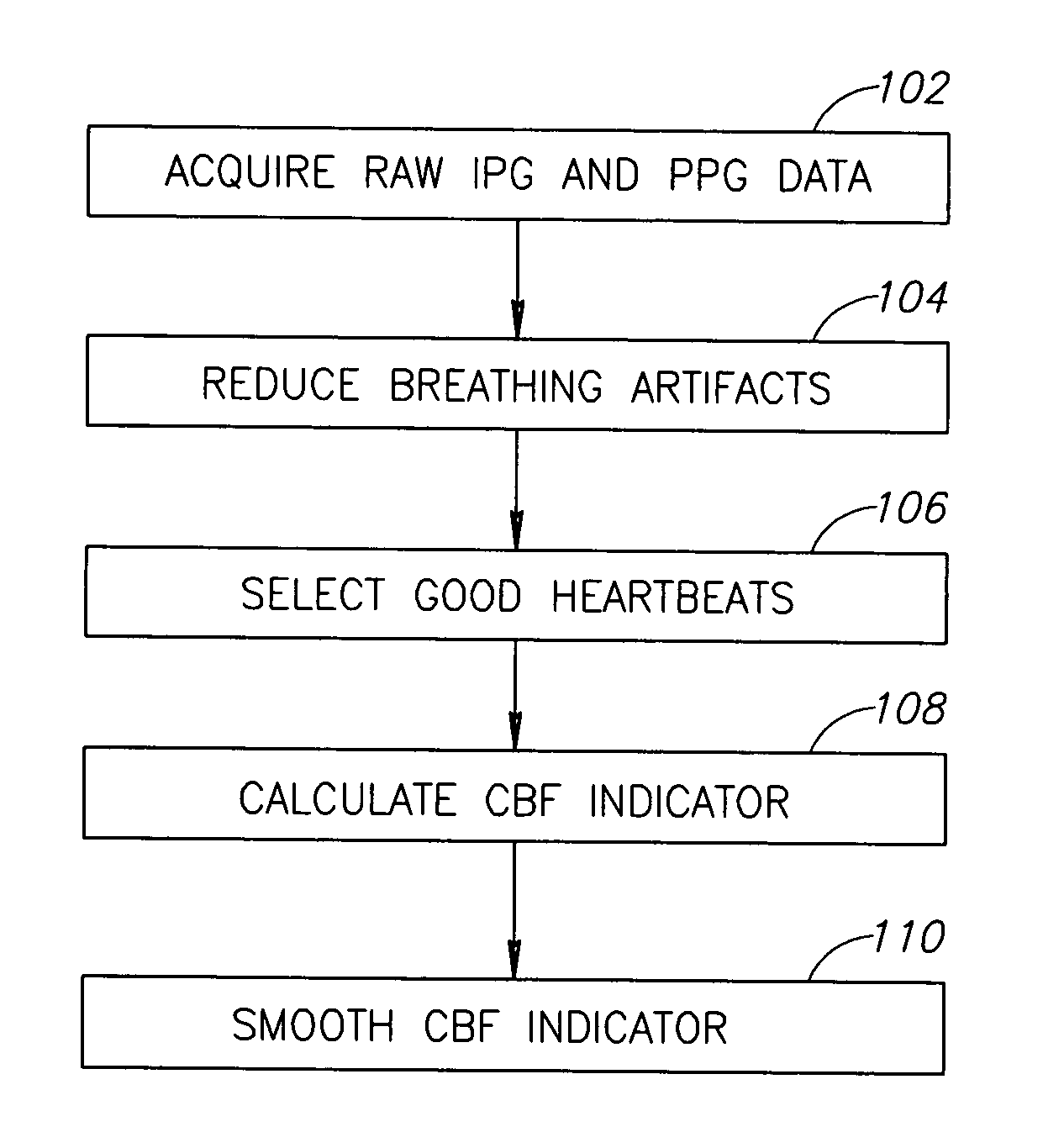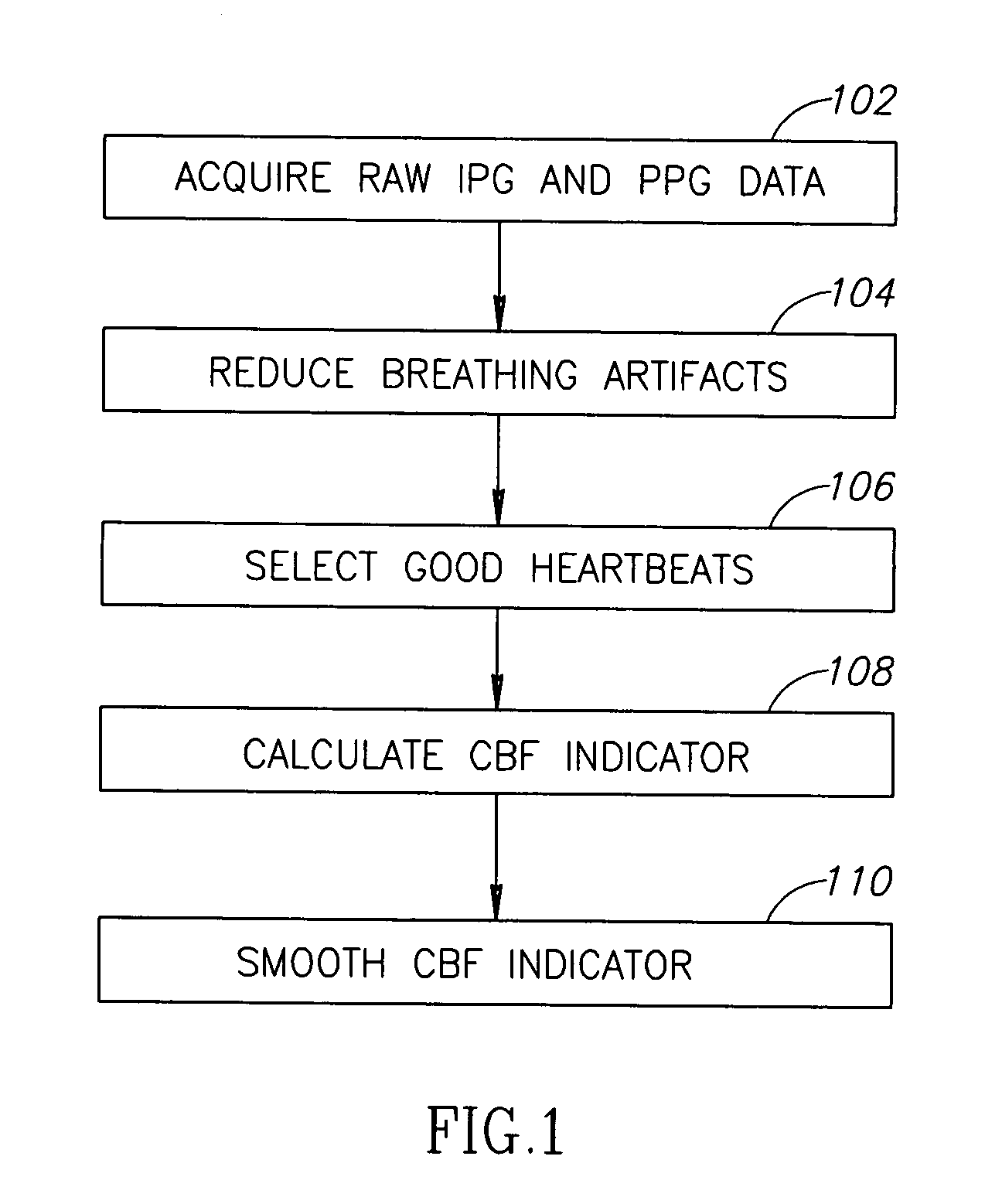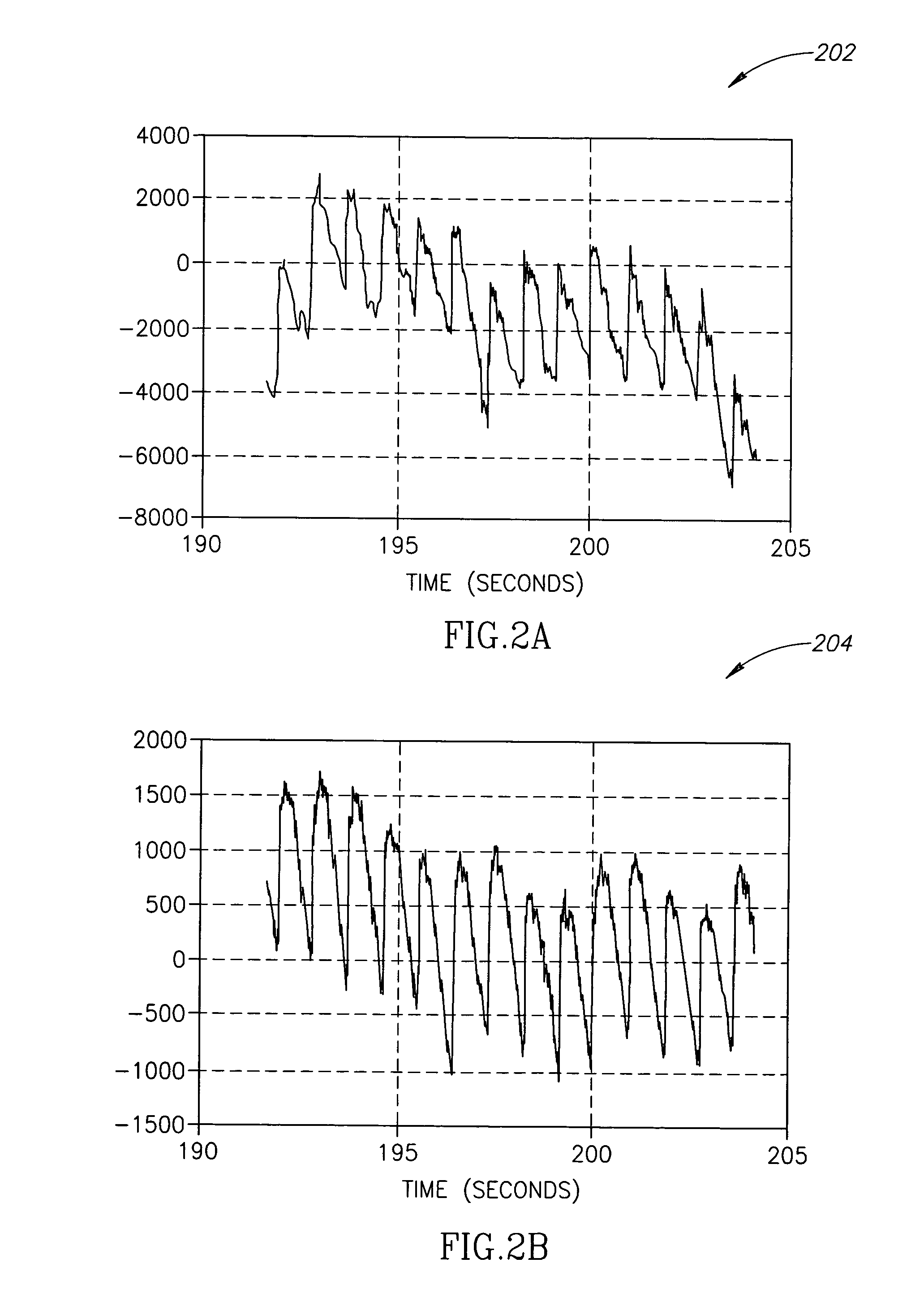Cerebral perfusion monitor
a perfusion monitor and cerebral technology, applied in the field of measuring blood flow in the head, can solve the problems of increased blood flow to the brain, brain cell death, brain cell damage, etc., and achieve the effect of reducing noise or artifacts
- Summary
- Abstract
- Description
- Claims
- Application Information
AI Technical Summary
Benefits of technology
Problems solved by technology
Method used
Image
Examples
Embodiment Construction
[0055]FIG. 1 shows a flowchart 100, outlining a method for finding cerebral blood flow (CBF) according to an exemplary embodiment of the invention. The different steps in flowchart 100 will be described with reference to graphs of data, shown in FIGS. 2, 3, and 4.
[0056]At 102, raw IPG and PPG data of the head is acquired. The data is acquired, for example, using any of the methods described in any of the above mentioned related patent applications or the patents, and publications as referenced in the Background, or any other methods known in the art for acquiring IPG and PPG data of the head. For example, combined sensors, incorporating both electrodes for IPG and optical sensors for PPG, are used, or separate sensors are used. Optionally, the IPG electrodes are designed to be of a size and shape, and are positioned on the head, so as to obtain IPG data that is relatively more sensitive to the impedance of the interior of the skull, and relatively less sensitive to the impedance of ...
PUM
 Login to View More
Login to View More Abstract
Description
Claims
Application Information
 Login to View More
Login to View More - R&D
- Intellectual Property
- Life Sciences
- Materials
- Tech Scout
- Unparalleled Data Quality
- Higher Quality Content
- 60% Fewer Hallucinations
Browse by: Latest US Patents, China's latest patents, Technical Efficacy Thesaurus, Application Domain, Technology Topic, Popular Technical Reports.
© 2025 PatSnap. All rights reserved.Legal|Privacy policy|Modern Slavery Act Transparency Statement|Sitemap|About US| Contact US: help@patsnap.com



